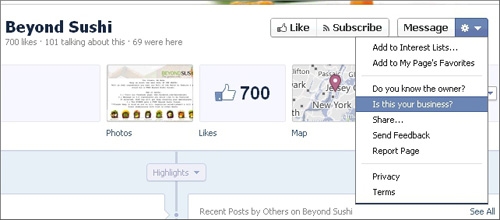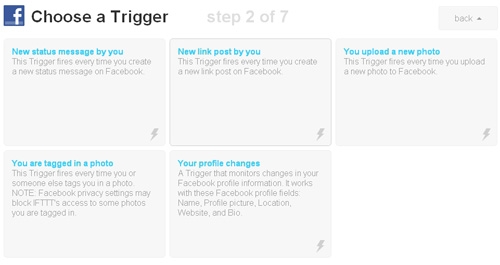 You and your small or micro business need to have a social media presence. That we know. If your potential clients, customers, and audience live on Facebook, Twitter, Pinterest, YouTube, and so on, then it’s only reasonable that you go to those places to reach them. They ain’t coming to you.
You and your small or micro business need to have a social media presence. That we know. If your potential clients, customers, and audience live on Facebook, Twitter, Pinterest, YouTube, and so on, then it’s only reasonable that you go to those places to reach them. They ain’t coming to you.
Rarely do small businesses have the resources to hire a social media manager, meaning the fate of your online social presence likely rests on your shoulders. Even if you have an employee or intern whom you can charge with spinning a social web, that person still needs input from you.
The following 15 social media tips are designed to help you set up and manage a social media presence for a small business or brand. Self-employed people, including freelancers, should consider themselves or their name the brand they’re promoting.
1. Write down the results you want
I see so many businesses (not just small ones, either) set up social media profiles without having any idea of what they want to do with that presence. Ask the person in charge, and the answer will be something terrifyingly vague, like “to engage with our audience,” which means diddly-squat.
Do you want to provide answers and assistance to your customers or readership? Do you want them to visit your website? Do you want them to buy something? Do you want to build a relationship so that the customers are now thinking more about your brand or business, and are developing a positive image that they will later share with their friends? What do you want to happen?
If you don’t know what results you want, using social media will be a huge waste of your time and resources. Define what you want to happen as a result of being on social networking sites, and write it down. Writing forces you to think through your ideas clearly and fully. Writing is a heightened form of thinking (that’s why writers are so smart). Whatever you write down in this exercise, that should be your social media mission statement.
2. Decide where to be
Just because you read about Pinterest or Instagram attracting millions of users doesn’t mean your business will benefit from being on those sites. Decide where to spend your social time based on the desired results and likelihood of payoff.
One of the best ways to help you decide is to find out if people are already talking about your business or brand on various sites. The next three tips are site-specific tricks for doing so…
3. Find out if your business is already on Facebook
On Facebook, use the search bar to look for your business or brand. It’s possible it already has a Place presence, in which case you’ll want to claim it. You can also see how many people “like” your business and are talking about it.
4. Find mentions of your business on Twitter
Enter your domain name into the search bar on Twitter (assuming you have an active website, of course). A Twitter search for a domain like “itproportal.com” will turn up instances of tweets that cite it, even if the URL has been truncated using a URL shortening service (such as bit.ly, for example).
5. Find out if Pinterest users are pinning your content
Want to know if content from your business is already on Pinterest? A good trick is to type the following into your browser’s address bar:
http://pinterst.com/source/domain/
Except replace the word “domain” with your business’ homepage URL, for example with “itproportal.com” which will get you the results shown in the image below:
6. Broadcast your purpose
As you decide where to push your business within the enormous world of online social sites, be clear about what your business is and why it’s on the various sites when setting up profiles. Fill in descriptions, “about” information, and other identifying content with clear, tight explanations. Refer back to your main business mission statement and your social media mission statement. What is the business or brand (or “who are you?” in the case of self-employed people) and what will you do on the social site?
7. Fulfil the promise
On Facebook in particular, do what you promised. Did you dangle a carrot to get Facebook users to “like” your page? Then follow through and give them the exclusive offers, coupons, updates, photos, news, or whatever else you said you’d deliver. It’s not enough for Facebook users to “like” your business once. Engage with them. It’s what you wanted when you set up the page, and it’s what your “likers” wanted when they liked it.
8. Be more than a business
People connect with people on Twitter, so even though you may be tweeting (and Facebooking) as a business, tell your followers who you are and why you are in charge of the account. Include this information in your bio or “about” information. Something as simple as: “I’m Uncle Artie, CEO of Uncle Artie’s Widgets” will do. From time to time, post information that reminds your followers that you are a human being with depth and interests. Social media users really do appreciate a human touch.
9. Don’t just push your own content
No one likes a self-obsessed egomaniac (I know, it’s hard to believe), so in addition to posting content about your business, also discuss other relevant issues, businesses, brands, or ideas – anything that makes you excited. This tip relates directly to the previous one. People who are passionate about a wide range of subjects are interesting, and interesting people attract followers. Trickle little bits of your passion into your social media presence, maybe one in every ten posts or so. Skip potentially controversial subjects (politics, religion, money), but share whatever it is that ignites your enthusiasm.
10. Keep a fresh stash of photos and images
Do post photos and refresh images across all your social media accounts – except the profile picture, which should be constant for at least a year at a time. Keep a stash of photos from your work environment, the people in your small business, outings that spark your entrepreneurial creativity, prototypes of the goods you sell, whatever. Reserve these photos and share them intermittently, rather than vomit them at your followers all at once. When you save the photos, name them intelligently so that it’s easy to post them later and add the right caption.
11. Learn basic image editing
You don’t need to be a professional graphic designer to know how to spin an image counter-clockwise, crop it, resize an image without squashing it, and adjust the colour, but learning those few skills makes a huge difference to the quality of the images you share on social sites.
12. Use an aggregator app
Efficiently manage all your social media profiles from one place with a social media aggregator app. These apps, some of which you can use right through a website while other are downloadable, let you post to Facebook, Twitter, LinkedIn, and other social sites from one place, as well as read your incoming direct messages, replies, and so on. TweetDeck is a famous (and high quality) example of one of these aggregator apps.
13. Daisy-chain updates
If a social media aggregator app sounds like it’s more than you need, an alternative way to manage multiple updates is to daisy-chain various social networking sites together. Most people know that you can set up Twitter and Facebook so that all your posts to one of those accounts appear on the other. You can daisy-chain multiple services in this way, for example, Google+ to Twitter to Facebook . But another way to achieve the same goal (but with more control over what exactly you chain together) is to use a free service called IFTTT, which stands for “If this, then that.” For example, you can set up a rule that says, “If I post to Twitter, then also post the same thing to Facebook.” You don’t have to know a lick of code to use IFTTT, either. It’s very simple.
14. Always add descriptions, captions, comments
When you share links, photos, and videos, diligently add a description, caption, or comment. Repeatedly posting without those descriptions is a clear indication to your followers that you’re not thinking about what you post. You’re just barfing spam at them. In addition, when a user comments on your content, acknowledge them. This doesn’t mean you always have to have the last word, however. A simple “like” or reply of “thanks” can go a long way towards nurturing a good relationship with your audience.
15. Lock down tweets to 100 characters
Twitter gives you 140 characters to use in a tweet, but you’ll get more mileage out of tweets that are only 100 characters long. Shea Bennet, co-editor of AllTwitter.com, advises that ideally you need to reserve 40 characters so that other people who retweet your content can add their own comments or a link. It’s a very good point to bear in mind, even if it does mean that you have to be even more concise.



